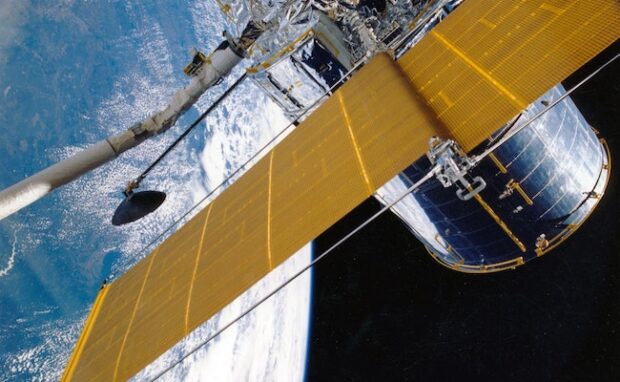NASA laser communications system to perform space trials
NASA will send its laser communications system to the International Space Station to perform tests. ILLUMA-T will demonstrate sending and receiving information with invisible infrared light with higher data rates than previous technologies. If it succeeds trials, it could facilitate sending information from space missions to Earth.
Some may not see the significance of studying and experimenting in outer space. However, we rely on technologies from space research, such as the global positioning system or GPS. Soon, you might send your photos and other media by beaming them to your friend’s device instead of relying on the Internet.
This article will elaborate on NASA’s latest laser communications program. Then, I will discuss similar space and communications projects. You might be surprised to see how laser data transfer technologies have progressed!
How does the NASA laser comms system work?
The National Aeronautics and Space Administration started developing laser communications tech in December 2021. However, its Laser Communications Relay Demonstration (LCRD) needed another system to complete an end-to-end system.
In other words, the laser comms demo needed two devices to show the technology in action. In 2023, NASA says it will send the Integrated LCRD Low Earth Orbit User Modern and Amplifier Terminal (ILLUMA-T) to the ISS.
Then, NASA’s Space Communications and Navigation (SCaN) program will conduct the demonstration from the International Space Station. ILLUMA-T and LCRD will use invisible infrared light to send and receive information at higher data rates than previous space comms.
Once it succeeds, NASA can send more images and videos of its space missions to Earth. Specifically, it will benefit expeditions within low orbit distances.
Matt Magsamen, deputy project manager for ILLUMA-T, stated, “Once ILLUMA-T is on the space station, the terminal will send high-resolution data, including pictures and videos, to LCRD at a rate of 1.2 gigabits-per-second.”
“Then, the data will be sent from LCRD to ground stations in Hawaii and California. This demonstration will show how laser communication can benefit missions in low Earth orbit.”
You may also like: Chinese laser can allegedly fire indefinitely
“Laser communications offer missions more flexibility and an expedited way to get data back from space,” said Badri Younes, former deputy associate administrator for NASA’s SCaN program.
“We are integrating this technology on demonstrations near Earth, at the Moon, and deep space,” he added. The NASA blog noted that laser communications systems have reduced energy consumption and weight, which are excellent for designing spacecraft.
The ILLUMA-T is roughly the size of a regular refrigerator and will attach to an external module on the ISS. Soon, laser communications will augment radio frequency systems so we can examine their findings sooner on Earth.
Are there other laser communications projects?
NASA admits the ILLUMA-T and LCRD weren’t the first to develop laser communications. For example, the Lunar Laser Communications Demonstration dates back to 2014.
During the Lunar Atmosphere and Dust Environment Explorer mission, it relayed information to and from lunar orbit to the Earth and back. In 2017, the Optical Payload for Lasercomm Science showed how lasers can boost data rates between Earth and space compared to radio signals.
The TeraByte InfraRed Delivery System launched last year, and it is now testing laser communications on a small CubeSat in low Earth orbit. Moreover, laser comms could facilitate Moon, Mars, and deep space missions.
Believe it or not, laser comms has also been progressing on Earth. Google’s parent company, Alphabet, has been developing a new form of internet connectivity that uses lasers. Its innovation hub, X-lab, discovered many remote rural areas that lack internet connectivity.
You may also like: Inkjet vs. laser printer
However, installing cable networks requires extensive planning and expensive construction. X-labs thought, “What if we leapfrogged to the optical spectrum and unlocked 30 times more data capacity?”
Eventually, the tech lab launched Project Taara, which “uses light to transmit information at super high speeds through the air as a very narrow invisible beam.” General Manager Mahesh Krishnaswamy explained, “This is as simple as a digital camera with a laser pointer.”
A transmitter shoots a laser containing data to a receiver’s “camera lens” so the latter can decode and turn them into bytes. X-labs says it deployed Project Taara in Africa and India. Soon, further research and development could expand its use to more countries.
Conclusion
NASA is developing a laser communications system that will perform tests on the International Space Station. It uses infrared beams to send and receive data from two points.
The National Aeronautics and Space Administration says it can send more data in a specific time than previous technologies. Soon, it could facilitate sending space mission findings to the Earth.
More importantly, it could improve how we send media and information to each other. Maybe our version will be a mix of NASA and Google’s? Learn more about the latest digital trends at Inquirer Tech.

